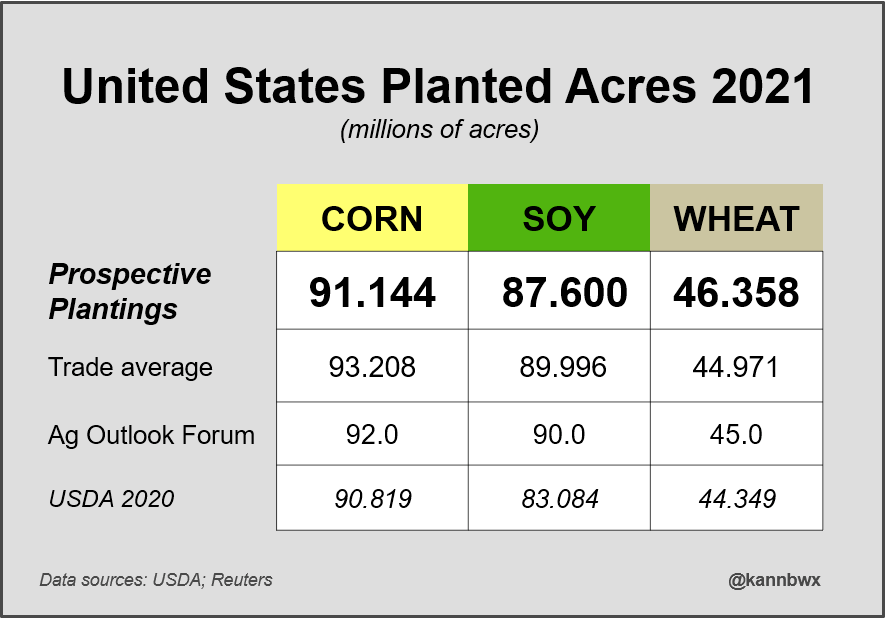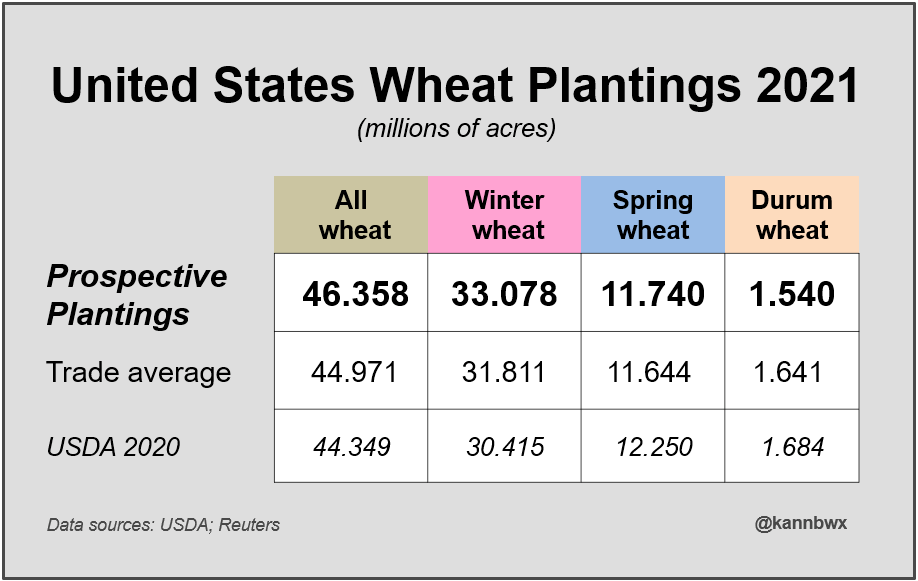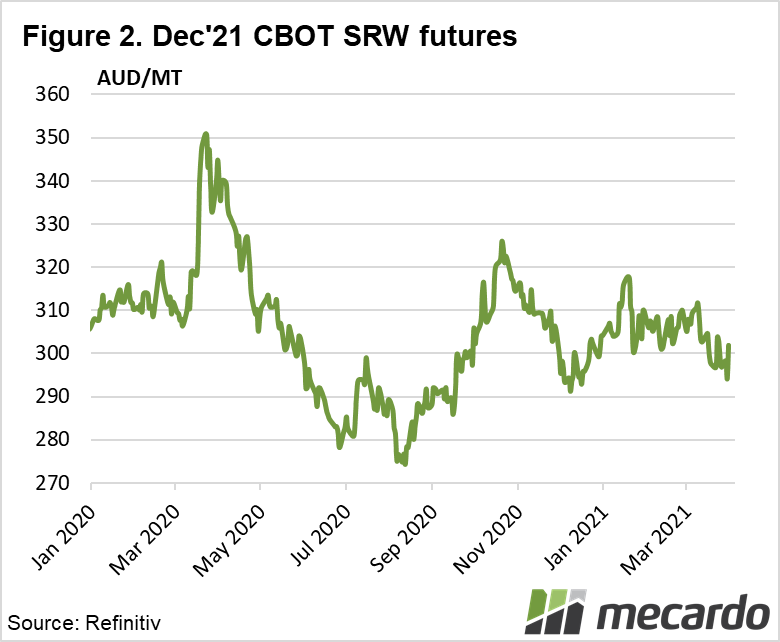The USDA seems to get a thrill from keeping people guessing. At the start of this week, all the news pointed to a falling commodity market. Improving crop conditions in the Northern Hemisphere, declining demand from key importers as they stared into new crop availability and the expectation that the US farmer in particular, would sow enormous acres to corn and soybeans to fill the gap between supply and demand
Last night’s USDA stock and acreage report seemed to be at best, counter-intuitive. While wheat area is up 4.5%, all the talk surrounded the fact that the US farmer has virtually ignored corn. Up 1%, or just 325k acres, the intended corn acres were well down on expectations. The combined corn and bean acreage of 178.7M acres was below the trades expected 183.2M acres. To put this in some kind of perspective however, this represents an increase of 4.8m acres above the 173.9M acres the USDA predicted last year.
Amid all the noise coming from the corn pit, wheat area quietly came in well above expectations.
There will be plenty of speculation around the validity of the survey data. Did the new crop inverse scare off potential swing acres? Does the farmer ignore price signals and simply stick to their rotation? (remembering a good rotation is possibly the best risk management method you can use). Is the survey method flawed and the USDA simply wrong? Whatever the reason, the market will mull this over for some time and keep volatility firmly entrenched.
Wheat will continue to be a follower of corn, despite what is arguably a bearish report for wheat. Higher ending stocks and an increase in area should have seen wheat prices tumble. It would appear that the US will need a ‘perfect’ season for row crops to satisfy the market.
The week ahead….
With both corn and soybeans hitting limit-up moves last night, expect follow-through action to continue today. Wheat will be a passive follower. This report sets the scene for a tumultuous planting period over the next couple of months with little room to move in case of weather or planting issues.
Have any questions or comments?
Figure by @kannbwx Click on figure to expand
Figure by @kannbwx Click on figure to expand
Click on figure to expand
Click on graph to expand
Data sources: USDA, Reuters





